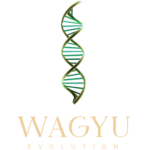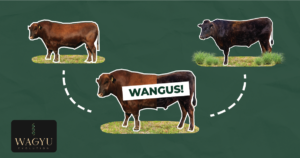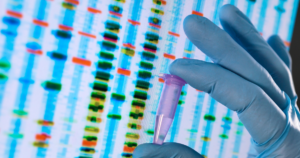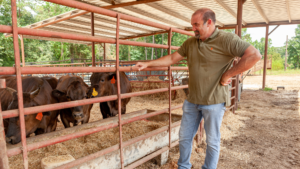Linebreeding And Inbreeding Coefficients Of Wagyu Cattle
Table of Contents
“The difference between linebreeding and inbreeding is that linebreeding was a success and inbreeding was not.”
Inbreeding is a population genetic parameter that is crucially important in cattle breeding. It happens when related cattle mate and it can’t be stopped, especially in small groups. Calves whose parents are linked will receive homozygous genotypes that came from ancestors they both had.
Inbreeding among cattle can exacerbate various issues, including disease susceptibility, diminished performance, decreased overall health, and other undesirable traits passed down through generations. This detrimental outcome is often referred to as “inbreeding depression.”
Responsible cattle farming practices are essential in mitigating the adverse effects associated with inbreeding.
Inbreeding
Inbreeding often leads to a decrease in the effective population size (Ne), which refers to the number of breeding individuals needed to maintain genetic diversity akin to the actual population. Factors such as geographic isolation, selective breeding practices, and small population sizes contribute to this reduction. In the case of Japanese Wagyu cattle, historical isolation and limited breeding choices led to a decline in Ne. Additionally, reliance on a few prominent sires further narrowed the gene pool, exacerbating the decrease in effective population over time. A smaller population size heightens the risk of inbreeding depression and reduces adaptability. Therefore, maintaining a sufficient population size is crucial for preserving genetic diversity and ensuring population health and sustainability.
A study reviewed 72 scientific papers from 1962 to 2004 to analyze heritability estimates for beef cattle carcass traits. It found that marbling heritability across beef breeds had an average estimate of 0.37. To maintain meat quality like that of Japan, linebreeding within Wagyu breeding programs is often employed. Breeds with a small effective population size, such as those outside Japan, are particularly susceptible to inbreeding depression.
Linebreeding
Linebreeding is when you breed animals from the same family to keep certain good traits strong. Similar to making sure that your best cow or bull mates to produce offspring with its own descendants. This helps to keep those good qualities going strong in the herd. For example, if you have a top-end bull, you might want its calves to keep the same top-end traits. Therefore, you would allow the bull to have calves with its daughters or granddaughters. This way, those good qualities stay strong over generations.
Linebreeding is a commonly employed technique among livestock producers, despite the potential risks associated with in-breeding. Professional breeders may occasionally utilize linebreeding as a means to safeguard desirable features. Linebreeding is often not seen as inbreeding, as its primary objective is not to generate inbred animals, but rather to enhance the exceptional individual’s impact on the population and future generations. However, this will only happen since linebreeding is a form of inbreeding.
Even if inbreeding reaches fairly high levels in a population, if the inbreeding is properly planned it can be used to produce outstanding individuals, and linebreeding is an inbreeding program that is designed to accomplish that goal.
Inbreeding depression is a measure of the population, not of an individual. Inbreeding depression is the difference between the mean of the inbred group and the mean of a control population with no inbreeding. Since inbreeding depression is a populational value, it represents the average value, which means an individual with a high level of inbreeding can be outstanding. If a breeder line breeds a superior male only with superior females, this program can quickly produce a superior population.
If the male that is being linebred mates only once or twice with his descendants, the linebreeding is considered to be mild linebreeding. If the male that is being linebred is repeatedly mated to his female descendants or is mated to them using a regular pattern, the linebreeding is considered to be intense linebreeding.
Intense linebreeding is a pre-biotechnology breeding program that can be used to create a “near clone.” By repeatedly mating a male to his female descendants, a farmer can create an “almost identical” genetic twin of the male.
Mild Linebreeding
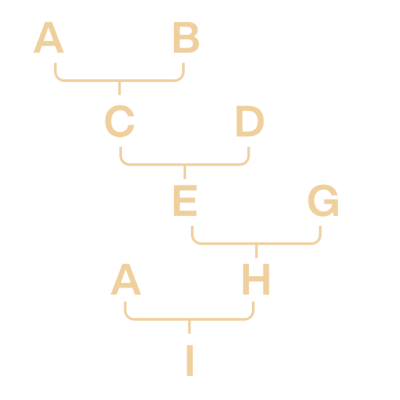
Intense Linebreeding
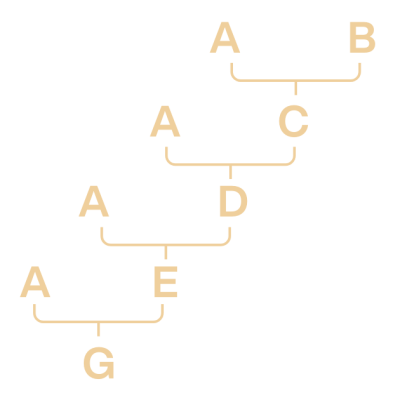
Inbreeding Coefficients of Wagyu Compared to Other Breeds
Japanese Wagyu cattle are very closely related to each other and do not have a large effective population size compared to other cattle types. Between 1994 and 2011, the average number of Wagyu in a group was 17 animals in the US (Scraggs et al., 2015). While Ayrshire, Brown Swiss, Guernsey, Holstein, Jersey, and Angus breeds, on the other hand, were thought to have 161, 61, 65, 39, 38, and 94 animals in their effective populations (Weigel & Lin, 2002; Decker et al., 2012). Between 1994 and 2011, the average amount of inbreeding in Wagyu was thought to be 5% (Scraggs et al., 2015). A study by McParland et al. (2007) found that the average inbreeding coefficients for the Irish meat cattle breeds Hereford, Simmental, Angus, Limousin, and Charolais in 2004 were 2.19 percent, 1.35 percent, 1.31 percent, and 0.5 percent respectively.
There is a big difference in genetic variation between breeds because of selection pressure that has mostly been on carcass traits. However, this has led to better carcass quality and marbling that hasn’t been met yet.
Possible Solutions to Inbreeding
Given the small effective population size and the risk of inbreeding depression, future mating plans for Japanese Wagyu cattle should prioritize maintaining a sizable population over preserving genetic uniqueness. This may involve sacrificing some genetic distinctiveness to ensure future adaptability.
To address the challenge of inbreeding and bolster population size, smaller farms can leverage advanced reproductive technologies such as artificial insemination, in vitro fertilization (IVF), and embryo implantation. These technologies allow for the utilization of genetic material from a wider range of individuals, thereby increasing genetic diversity within the population. By incorporating genetic material from diverse sources, farms can mitigate the negative effects of inbreeding and enhance the overall health and resilience of the Wagyu breed. Moreover, new research suggests that breeding current Japanese Wagyu with older Japanese Wagyu lines could help maintain desired traits like high marbling while reducing the detrimental effects of inbreeding. This approach aims to strike a balance between preserving valuable genetic characteristics and minimizing the risks associated with a small effective population size.
Conclusion
In addressing the challenge of inbreeding and bolstering population size in Japanese Wagyu cattle, prioritizing a sizable population over genetic uniqueness is imperative. This may require sacrificing some genetic distinctiveness to ensure future adaptability. Leveraging advanced reproductive technologies like artificial insemination, in vitro fertilization (IVF), and embryo implantation can help increase genetic diversity by incorporating material from a broader range of individuals. Furthermore, breeding current Japanese Wagyu with older lines offers a promising strategy to maintain desired traits while mitigating the detrimental effects of inbreeding. By striking a balance between preserving valuable genetic characteristics and minimizing the risks associated with a small effective population size, these approaches aim to safeguard the health and resilience of the Wagyu breed for future generations.
References
- McParland S., Kearney J.F., Rath M., Berry D.P. (2007) Inbreeding trends and pedigree analysis of Irish dairy and beef cattle populations. Journal of Animal Science 85(2), 322–331, doi 10.2527/jas.2006-367.
- Scraggs E., Zanella R., Wojtowicz A., Taylor J.F., Gaskins C.T., Reeves J.J., de Avila J.M., & Neibergs H.L. (2014) Estimation of inbreeding and effective population size of fullblood Wagyu cattle registered with the American Wagyu Cattle Association. Journal of Breeding and Genetics 131, 3–10, doi 10.1111/jbg.12066. Shriner
- Wagyu Cattle Farming
- Doekes H.P., Veerkamp R.F., Bijma P., de Jong G., Hiemstra S.J., Windig J.J. (2019) Inbreeding depression due to recent and ancient inbreeding in Dutch Holstein-Friesian dairy cattle. Genetic Selection Evolution 51(1), 54–54, doi: 10.1186/s12711-019-0497-z.
- McTavish E.J., Decker J.E., Schnabel R.D., Taylor J.F., & Hillis D.M. (2013). New World cattle show ancestry from multiple independent domestication events. Proceedings of the National Academy of Sciences of the United States of America, 110(15), 5751-5751, http://www.jstor.org/stable/42590296.
